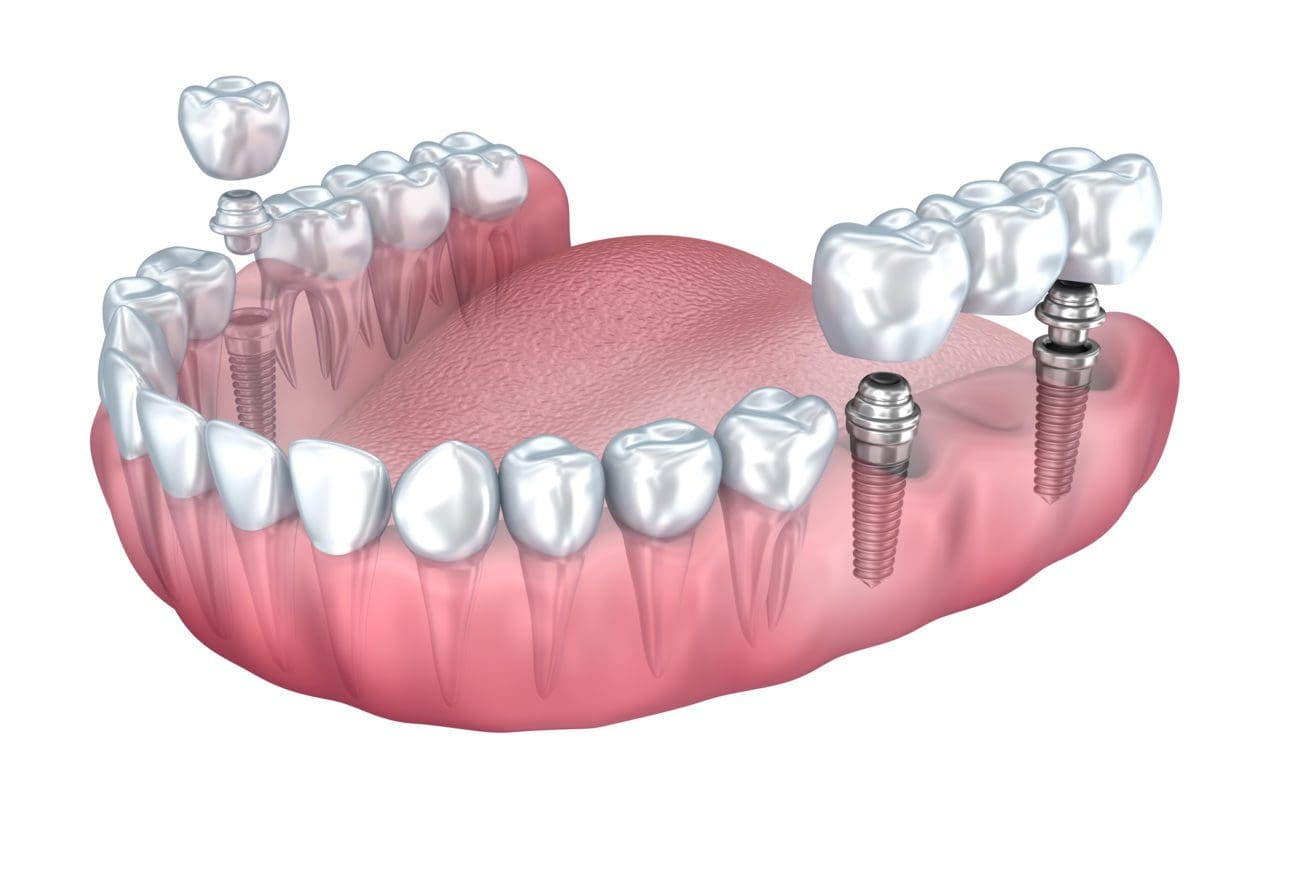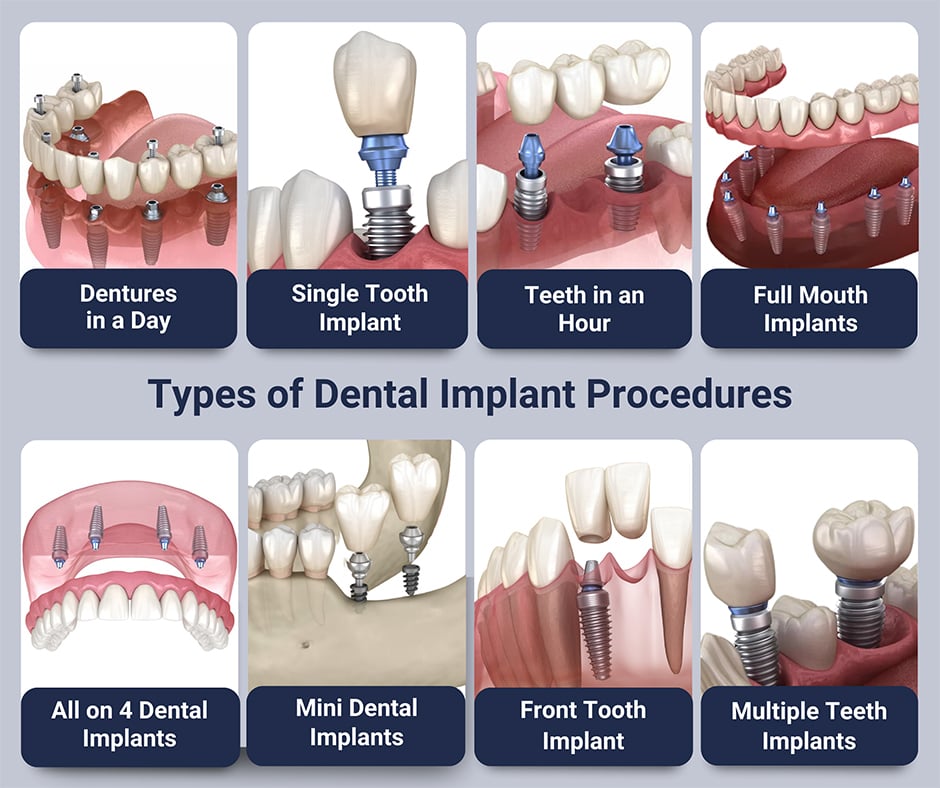6 Simple Techniques For Dental Sense
6 Simple Techniques For Dental Sense
Blog Article
Dental Sense Fundamentals Explained
Table of ContentsThe Basic Principles Of Dental Sense What Does Dental Sense Do?Some Of Dental SenseFascination About Dental Sense
are clinical gadgets surgically implanted right into the jaw to bring back a person's capacity to chew or their appearance. They give assistance for fabricated (phony) teeth, such as crowns, bridges, or dentures. When a tooth is lost due to injury or disease, an individual can experience issues such as rapid bone loss, defective speech, or adjustments to eating patterns that lead to discomfort.Dental dental implant systems include a dental implant body and oral implant joint and may likewise include an abutment addiction screw. Professional teeth whitening. The oral implant body is surgically put in the jawbone in location of the tooth's origin. The oral implant joint is usually connected to the dental implant body by the abutment fixation screw and expands with gums into the mouth to sustain the connected artificial teeth
(https://dentalsense1.mystrikingly.com/blog/transform-your-smile-with-dental-implants-root-canal-procedures-and)Framework of The Oral Implant System selecting dental implants, talk to your dental service provider about the potential advantages and threats, and whether you are a prospect for the procedure. Things to consider: Your overall health is an essential aspect in establishing whether you are a good candidate for dental implants, how much time it will require to heal, and the length of time the dental implant might stay in area.
Cigarette smoking may affect the recovery procedure and lower the long-lasting success of the implant. The recovery process for the dental implant body may take several months or longer, throughout which time you normally have a short-term joint in location of the tooth. the dental implant treatment: Thoroughly adhere to the oral health directions provided to you by your dental company.
The Facts About Dental Sense Revealed
Implant failing can result in the demand for another surgical treatment to fix or replace the implant system. Recovers the capacity to chew Restores aesthetic look Aids keep the jawbone from diminishing because of bone loss Maintains the health of the surrounding bone and periodontals Aids maintain adjacent (close-by) teeth steady Boosts lifestyle Damage to surrounding natural teeth throughout implant placement Injury to the surrounding tissues during surgical procedure, such as sinus perforation Injury during surgery (as an example, fracture of surrounding jawbone) Insufficient function, such as feeling like the teeth do not bite together typically A feeling that the tooth is loose or twisting in place resulting from an abutment screw loosening Implant body failing (looseness of the dental implant body) as a result of systemic infection, which might be more probable in patients with uncontrolled diabetes as a result of neighborhood infection in bone and gum tissues supporting the implant body due to delayed recovery, which might be more probable in individuals who smoke Trouble cleaning up the gum tissues around the dental implant, resulting in poor dental health Untreated gum condition Post-surgical tingling because of nerve impingement or damage Constantly inform health and wellness care suppliers and imaging service technicians that you have dental implants before any kind of magnetic resonance imaging (MRI) or x-ray procedures.
FDA is not familiar with any kind of negative events reported for MRI or x-ray treatments with dental implants. Dental implants systems are typically constructed from materials that follow global consensus criteria of the International Organization for Standardization (ISO) or ASTM International. These standards have information of what makes a risk-free product.

A dental implant is a structure that replaces a missing out on tooth. With screw-like tools, the cosmetic surgeon inserts a dental implant right into the jawbone, and it acts as an anchor for a man-made tooth, called a crown. A tool called an abutment connects the man-made tooth to the oral implant. The crown is personalized to fit the individual's mouth and match the shade of their teeth.
An Unbiased View of Dental Sense
Some individuals are helpful site not qualified for dental implant surgical treatment. It is for dental cosmetic surgeons to operate individuals with: intense illnessuncontrollable metabolic diseasebone or soft cells illness or infectionIf these problems are dealt with, a person can have the surgery. In, oral doctors abstain from operating individuals with: If people with any one of the above go through dental implant surgical procedure, there is a higher risk of the implant falling short.

Dental dental implant surgical procedure is a customized procedure. It's not the very same for everyone. The complying with provides a basic review of what you can anticipate your dental professional, oral specialist, periodontist or prosthodontist to do: Position the dental implant operatively. Provide you time to heal. Connect the article and final crown, bridge or denture.
Next off, your surgeon will thoroughly place the oral implant right into your jaw. Lastly, your specialist will rearrange your gum tissues and close the laceration with stitches. If your implant is near the front of your mouth, your dental professional will make a temporary tooth for you to wear till you recover. In this way, you won't have a void in your smile while you recuperate.
The Best Strategy To Use For Dental Sense
Your supplier can tell you what to expect in your scenario. During the recovery phase, your jawbone must fuse to the oral implant. This process, called osseointegration, is critical for security and lasting success. This process can take anywhere from 3 to 9 months. In some cases, it might take much longer.
When your implant heals, your dental expert can attach the joint (small port blog post) and your last repair (crown, bridge or denture). This usually takes about one hour to finish and may need a second minor surgical procedure. You shouldn't feel any type of discomfort throughout your oral implant procedure since your company will certainly make use of drug to numb your gums.
Report this page